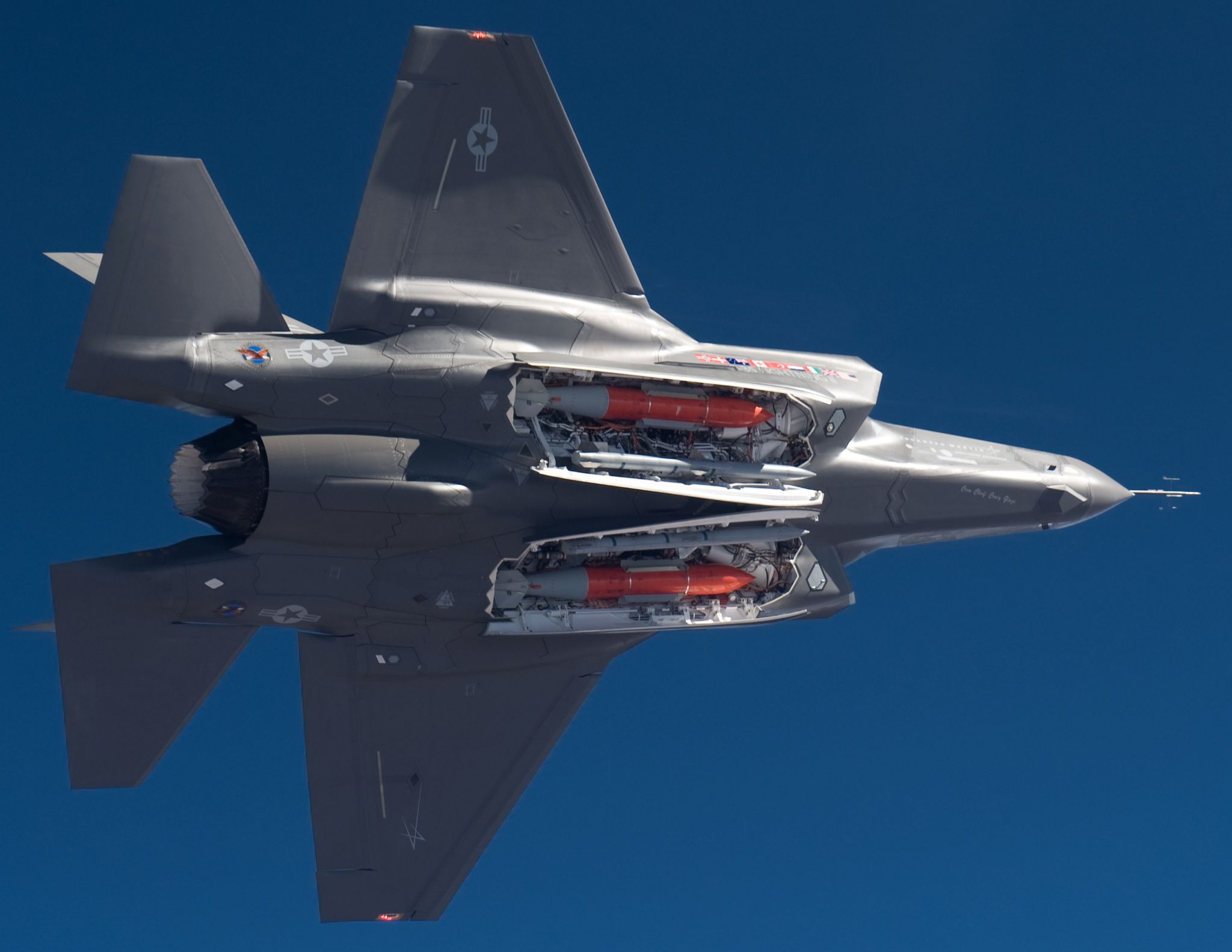US-produced F-35A fighter jets have reportedly received authorization to deploy B61-12 free-fall bombs, marking a historic milestone for the first fifth-generation aircraft to be approved for nuclear weapon carriage.
The certification announcement clearing the way for nuclear weapon carriage came on March 8 from Russ Goemaere, a spokesperson for the F-35 Joint Program Office, disclosed to Breaking Defense magazine.
According to Goemaere, the certification was attained on October 12, 2023, ahead of the timeline pledged to NATO allies for completion by January 2024. With this achievement, F-35As are now designated as “dual-capable” platforms — operating in both conventional and nuclear warfare scenarios.
In contrast to the US Air Force’s F-22 Raptor, which primarily focuses on air-to-air combat, the F-35A was designed from the outset to incorporate tactical nuclear strike capabilities.
Goemaere highlighted the significance of this milestone, saying, “The F-35A is the first 5th generation nuclear-capable aircraft ever, and the first new platform (fighter or bomber) to achieve this status since the early 1990s.”
This F-35 Nuclear Certification effort culminates 10+ years of intense effort across the nuclear enterprise, which consists of 16 different government and industry stakeholders.
The certification only covers F-35A conventional takeoff and landing aircraft and excludes other versions of the stealth fighter jet, like the F-35B with short take-off and vertical-landing capabilities or the carrier-based F35C.
Further, the aircraft is authorized solely for carrying the B61-12, an updated version of the B61 free-fall nuclear bomb initially introduced in 1960. The timeline for delivering B61-12s to Europe remains uncertain, although Politico previously suggested that the bombs would be shipped out in December 2022.
While Dutch military sources earlier hinted at F-35A nuclear capabilities in Europe, confirmation from US military authorities had been awaited until now. The operational clearance signifies a significant advancement in the F-35’s capabilities, positioning it at the forefront of modern warfare technology.
While China’s J-20 and Russia’s Su-57 also boast stealth fighter capabilities, neither aircraft has yet attained the clearance for such operations. As a result, the F-35 stands out as the dominant force in this arena, with its unique combination of stealth and nuclear strike capabilities setting it apart from its counterparts.
F-35 and B61-12: A Lethal Combo
The F-15E was the first American fighter certified for B61-12 compatibility, with other aircraft, including F-16A/Bs, F-16C/Ds, and the PA-200 Tornado utilized by select NATO countries, also authorized for nuclear payload carriage.
However, the F-35 presents several advantages over other fighter jets and bomber aircraft. One of the primary advantages of the F-35 lies in its ability to house the B61-12 internally, preserving its stealth characteristics while ensuring precise delivery of nuclear strikes.
Unlike conventional bomber aircraft such as the B-2, the F-35 boasts superior agility and maneuverability, enabling it to reach otherwise inaccessible targets with unprecedented accuracy.
Additionally, the B61-12 nuclear bomb itself represents a significant leap in nuclear bomb technology, featuring maneuvering tail fins, spin-stabilizing rockets, and advanced guidance systems incorporating both inertial and GPS capabilities.
These enhancements transform the B61-12 into a highly precise glide bomb, capable of striking targets with unparalleled accuracy, even at distances of up to 15 miles when launched from maximum altitude.

Kris Osborn, Military Affairs Editor of 19FortyFive, highlighted the strategic advantages offered by the F-35 in nuclear warfare. Osborn pointed out that while stealth bombers like the B-2 or B-21 and large nuclear-capable bombers like the B-52 can pose a nuclear threat, they often struggle to maneuver effectively in heavily contested areas near ground targets.
In contrast, the F-35’s stealth, speed, and maneuverability enable it to penetrate hostile airspace and deliver tactical nuclear strikes with precision and efficiency.
As military strategists continue to adapt to the challenges of modern warfare, the integration of nuclear capabilities into versatile platforms like the F-35 represents a significant step forward.
By leveraging its unique capabilities, the F-35 not only enhances the effectiveness of nuclear deterrence but also expands the range of strategic options available to defense planners in an increasingly complex and dynamic global security environment.
- Contact the author at ashishmichel(at)gmail.com
- Follow EurAsian Times on Google News




